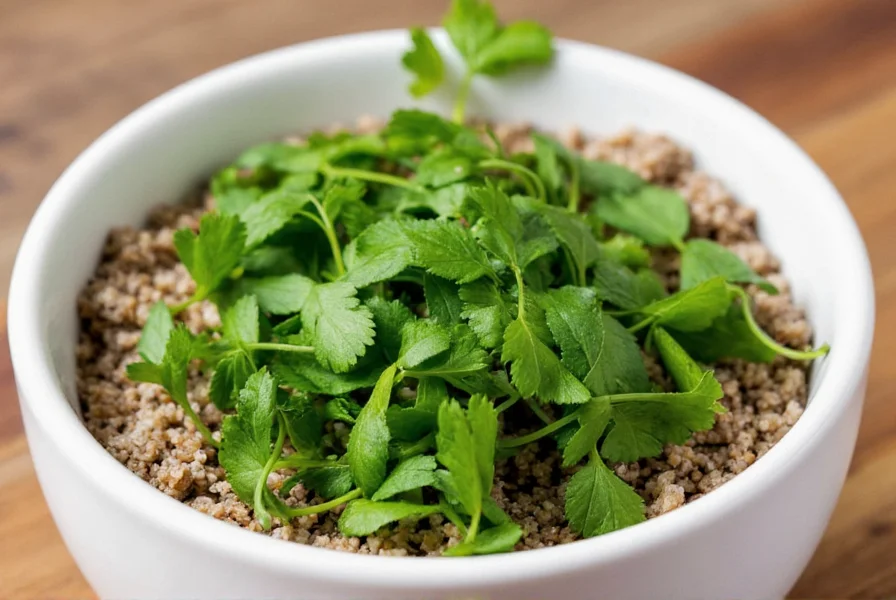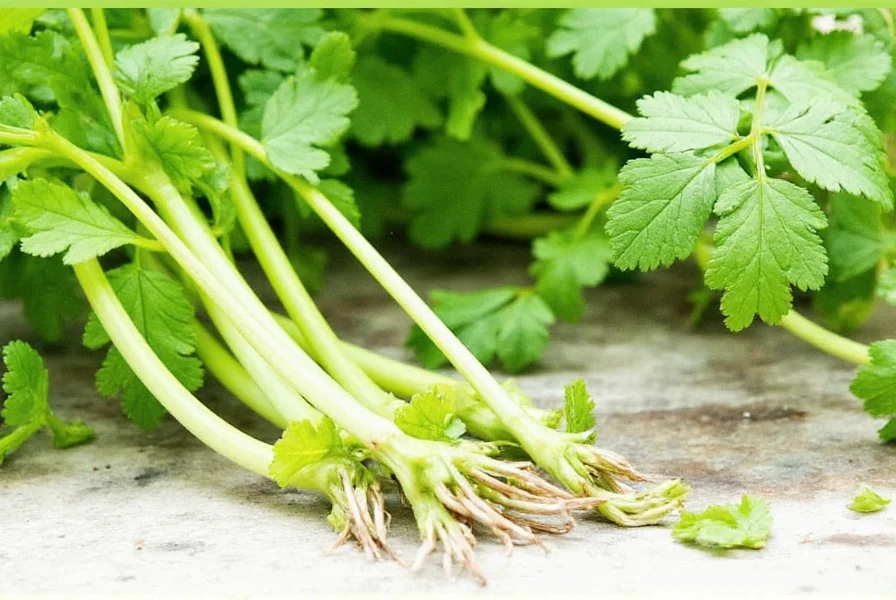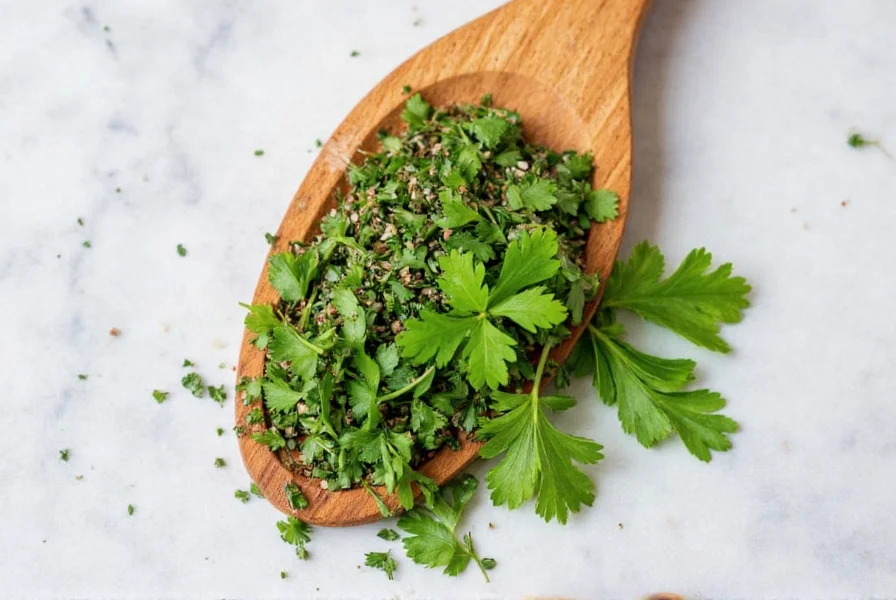Many home cooks and professional chefs encounter situations where coriander isn't available or suitable for their culinary needs. Whether you're dealing with the genetic predisposition that makes coriander taste like soap, facing supply shortages, or simply wanting to experiment with different flavor profiles, knowing effective substitutes can rescue your recipe and expand your culinary repertoire.
Understanding Coriander's Unique Flavor Profile
Before exploring alternatives, it's essential to understand what makes coriander distinctive. Both the fresh leaves (often called cilantro in the Americas) and dried seeds offer different flavor characteristics:
- Fresh coriander/cilantro: Bright, citrusy, slightly peppery with herbal notes
- Dried coriander seeds: Warm, nutty, citrusy with subtle spice undertones
This distinction matters because the best substitute depends on whether you need a replacement for fresh leaves or dried seeds. Many cooking resources fail to differentiate between these two forms, leading to unsatisfactory results when substitutions aren't properly matched to the recipe's requirements.
Top Fresh Coriander Alternatives
When your recipe calls for fresh coriander leaves (cilantro), consider these substitutes based on your specific culinary application:
Parsley: The Most Accessible Substitute
Flat-leaf (Italian) parsley provides the closest visual match and mild herbal flavor. While lacking coriander's citrus notes, it works well as a garnish substitute in dishes like tabbouleh, chimichurri, or as a finishing herb for soups. Use equal amounts as a direct replacement when appearance matters more than exact flavor replication.

Culantro: The Flavor Twin
Often confused with cilantro, culantro (Eryngium foetidum) has a stronger, more persistent flavor that closely resembles coriander. This tropical herb works exceptionally well in Caribbean, Latin American, and Southeast Asian cuisines. Use about half the amount of culantro compared to coriander, as its flavor is more intense. It holds up better to cooking than regular coriander, making it ideal for stews and braises.
Mint: For Refreshing Applications
When coriander's soapy taste affects your perception, mint provides a refreshing alternative in salads, salsas, and yogurt-based sauces. While distinctly different, mint's cooling properties can complement similar flavor profiles. Use spearmint for milder applications and adjust quantities based on your taste sensitivity.
| Substitute | Best Used In | Ratio to Coriander | Flavor Notes |
|---|---|---|---|
| Parsley | Garnishes, tabbouleh, chimichurri | 1:1 | Milder, less citrusy |
| Culantro | Caribbean stews, salsas, curries | 1:2 (use half) | Stronger, more persistent |
| Mint | Salads, raita, ceviche | 1:1.5 (use slightly more) | Cooling, refreshing |
| Dill | Fish dishes, tzatziki, pickling | 1:1 | Grassy, anise-like notes |
Dried Coriander Seed Substitutes
When your recipe requires ground coriander or whole seeds, these alternatives work best:
Cumin: The Most Versatile Replacement
Cumin provides the warm, earthy notes found in coriander seeds, though with a more pronounced smokiness. It works particularly well in Indian, Middle Eastern, and Mexican spice blends. Use ¾ teaspoon cumin for every 1 teaspoon of coriander seeds. For best results, toast whole cumin seeds before grinding to enhance their aromatic qualities.
Caraway Seeds: For European and North African Dishes
Caraway offers similar citrus undertones with a slightly sweeter profile. It works exceptionally well in rye bread, sauerkraut, and某些 North African spice mixes where coriander might otherwise be used. Use a 1:1 ratio when substituting in cooked dishes, but reduce slightly in raw applications as caraway's flavor intensifies during cooking.
Regional Substitution Strategies
Understanding regional cooking traditions helps identify authentic alternatives when coriander isn't available:
- Mexican cuisine: Combine equal parts parsley and mint for fresh applications; use cumin with a touch of oregano for spice blends
- Indian cooking: For fresh coriander in chutneys, try a combination of mint and dill; for coriander seeds, use cumin with a pinch of fennel
- Middle Eastern dishes: Parsley works well as a garnish substitute; for spice blends, combine cumin with a touch of allspice
- Asian recipes: Thai basil makes an excellent fresh substitute in Southeast Asian dishes where coriander would typically be used
Special Considerations for Coriander Aversion
Approximately 21% of the population carries a genetic variation that makes coriander taste like soap. If you're among those affected, these strategies can help:
- Cook coriander thoroughly, as heat breaks down the aldehydes responsible for the soapy perception
- Try culantro, which shares similar chemical compounds but often doesn't trigger the same reaction
- Use lemon or lime juice to mask the undesirable flavor notes
- Consider growing your own coriander, as freshly picked leaves sometimes present less intensely
Practical Conversion Guide
When substituting coriander alternatives, these ratios will help maintain recipe balance:
- Fresh coriander to parsley: 1:1 ratio
- Fresh coriander to culantro: 1:2 ratio (use half as much culantro)
- Ground coriander to cumin: 1:0.75 ratio
- Coriander seeds to caraway: 1:1 ratio for cooked dishes
- Coriander in salsas: Replace with equal parts mint and parsley
Remember that successful substitution often requires small taste adjustments throughout the cooking process. Start with slightly less substitute than recommended, then adjust to your preference as the dish develops.
Final Recommendations
The ideal coriander alternative depends on your specific culinary application and personal taste preferences. For most general cooking purposes, parsley serves as the most universally acceptable fresh substitute, while cumin provides the closest match for dried coriander seeds. Those with coriander aversion will find mint and dill particularly helpful in fresh applications.
When experimenting with substitutes, consider the dish's overall flavor profile rather than focusing solely on replacing coriander. Sometimes a combination of herbs works better than a single substitute, allowing you to recreate the complexity that coriander would have provided. Keep notes on your substitutions to refine your approach for future cooking.

Frequently Asked Questions
What's the best substitute for coriander in guacamole?
For guacamole, mint combined with a small amount of parsley makes the best coriander alternative. Use half the amount of mint and equal parts parsley compared to the coriander called for in your recipe. The mint provides a similar refreshing quality without the soapy notes that some people experience with coriander, while parsley maintains the visual green color.
Can I use cilantro instead of coriander seeds?
No, fresh cilantro (coriander leaves) cannot directly substitute for coriander seeds as they have completely different flavor profiles. For recipes requiring coriander seeds, use cumin or caraway seeds instead. If you must use fresh cilantro as a last resort, you'll need approximately 3 times the amount of fresh leaves to approximate the seed flavor, but the result will be significantly different.
Why does coriander taste like soap to some people?
Approximately 21% of people have a genetic variation in olfactory receptor genes that causes them to perceive certain aldehydes in coriander as soapy. This genetic trait is more common in people of European descent. The specific compounds that trigger this reaction are also found in soap, hence the unpleasant association. Cooking coriander can sometimes reduce this effect as heat breaks down the problematic compounds.
What's a good coriander substitute for Indian curry?
For Indian curries requiring fresh coriander, a combination of mint and parsley works best. For coriander seeds in spice blends, use cumin with a small amount of fennel seeds. The typical ratio is 3 parts cumin to 1 part fennel to replace ground coriander. This combination maintains the warm, citrusy notes essential to authentic Indian flavor profiles while providing similar depth and complexity.
How do I substitute dried coriander for fresh coriander?
Dried coriander seeds cannot directly substitute for fresh coriander leaves due to their different flavor profiles. However, if absolutely necessary, use 1 teaspoon of dried coriander seeds (ground) for every ¼ cup of fresh coriander leaves. Note that this substitution works only in cooked dishes, not as a garnish, and will significantly alter the flavor profile of your dish.











 浙公网安备
33010002000092号
浙公网安备
33010002000092号 浙B2-20120091-4
浙B2-20120091-4